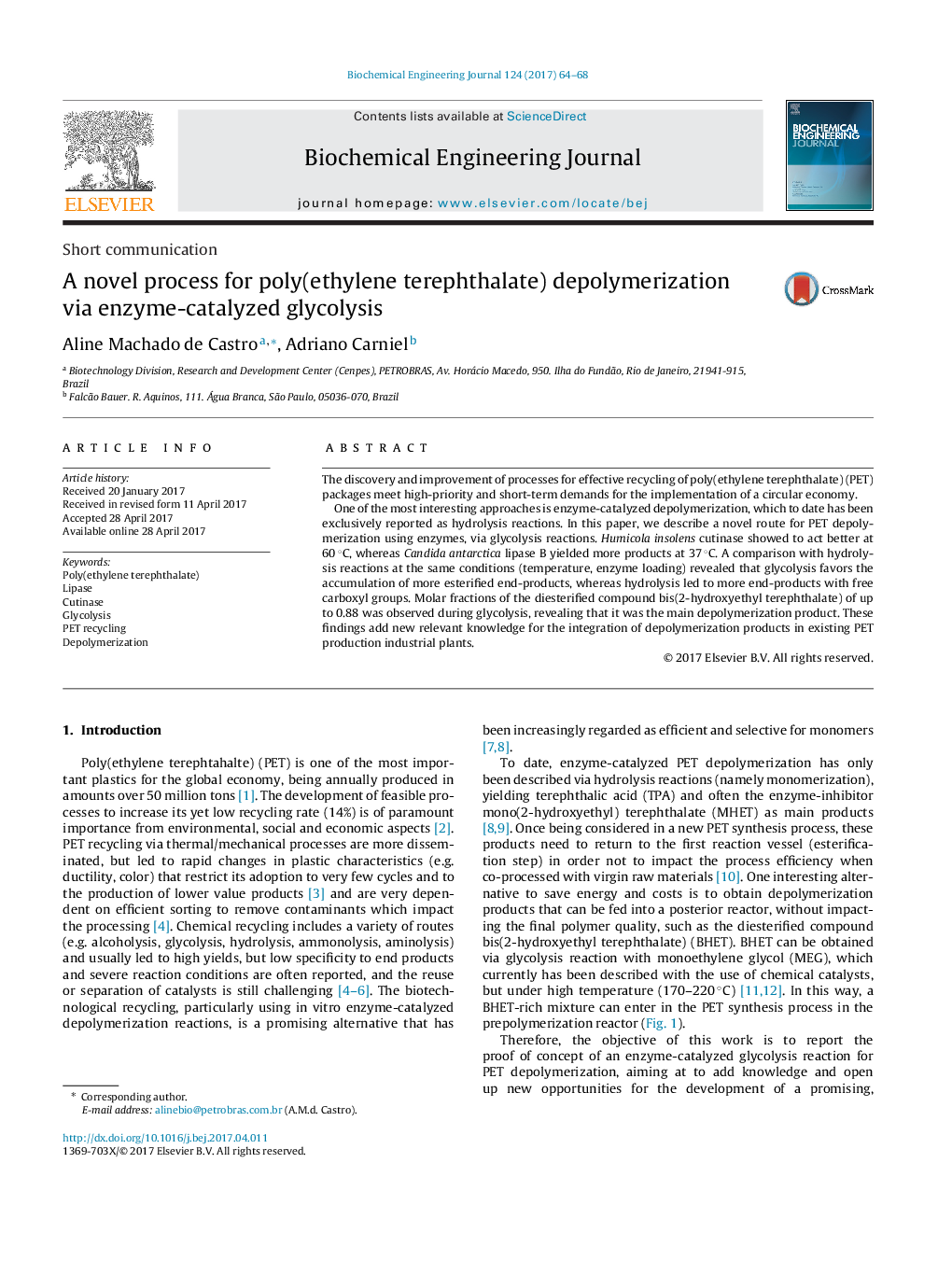| کد مقاله | کد نشریه | سال انتشار | مقاله انگلیسی | نسخه تمام متن |
|---|---|---|---|---|
| 4752166 | 1415991 | 2017 | 5 صفحه PDF | دانلود رایگان |
- A novel enzyme-catalyzed process for PET glycolysis is described.
- A promising route for energy and cost savings.
- Humicola insolens cutinase led to higher content of bis(2-hydroxyethyl terephthalate).
- Mole fraction of bis(2-hydroxyethyl terephthalate) of up to 0.88 was achieved.
The discovery and improvement of processes for effective recycling of poly(ethylene terephthalate) (PET) packages meet high-priority and short-term demands for the implementation of a circular economy.One of the most interesting approaches is enzyme-catalyzed depolymerization, which to date has been exclusively reported as hydrolysis reactions. In this paper, we describe a novel route for PET depolymerization using enzymes, via glycolysis reactions. Humicola insolens cutinase showed to act better at 60 °C, whereas Candida antarctica lipase B yielded more products at 37 °C. A comparison with hydrolysis reactions at the same conditions (temperature, enzyme loading) revealed that glycolysis favors the accumulation of more esterified end-products, whereas hydrolysis led to more end-products with free carboxyl groups. Molar fractions of the diesterified compound bis(2-hydroxyethyl terephthalate) of up to 0.88 was observed during glycolysis, revealing that it was the main depolymerization product. These findings add new relevant knowledge for the integration of depolymerization products in existing PET production industrial plants.
90
Journal: Biochemical Engineering Journal - Volume 124, 15 August 2017, Pages 64-68
